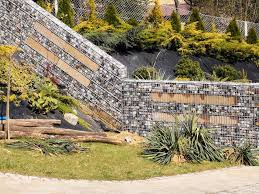
Gabions in Civil Engineering: Reinventing Infrastructure
Gabion construction, a technique that requires employing cable mesh storage containers filled up with stones, has appeared as being a sustainable and flexible answer for many different civil design jobs. From preserving wall surfaces to erosion control, the benefits of developing with gabions (gabiony) are comprehensive and multifaceted.
1. Structural Reliability: Gabion constructions supply outstanding strength and steadiness, which makes them well suited for withstanding numerous environmental causes for example water movement, garden soil motion, and also seismic activity. The interlocking nature in the gemstones throughout the cable fine mesh containers provides built in stableness, guaranteeing the endurance and longevity of gabion installations.
2. Adaptability to Landscape: In contrast to rigorous structures like definite walls, gabions (gabiony) can conform to natural curves of the property, which makes them highly adjustable to various areas and environmental circumstances. Whether or not on uneven or sloping landscape, gabion walls seamlessly combine in the panorama when supplying effective erosion manage and maintaining capabilities.
3. Erosion Manage: One of several main applications of gabion development is deterioration manage along riverbanks, coastlines, and hillsides. By taking in the vitality of running h2o and protecting against dirt displacement, gabions assist control the garden soil and minimize erosion, thereby guarding important infrastructure and normal environments from deterioration.
4. Cost-Usefulness: Gabion construction is often a lot more cost-effective in comparison with traditional building techniques. The type of material required—stone fill up and cable mesh—are readily available and comparatively cheap, causing lowered total development charges. Moreover, gabion installation normally demands small specialized equipment, further contributing to financial savings.
5. Enviromentally friendly Sustainability: Sustainability is a important factor in present day development methods, and gabion construction aligns nicely with enviromentally friendly targets. The usage of locally sourced rock fill reduces the carbon dioxide footprint linked to travel, even though the permeable nature of gabion surfaces endorses all-natural discharge and crops expansion. Moreover, gabion buildings can be dismantled and used again, lessening spend and environment impact.
To sum up, the key benefits of gabion development, such as architectural reliability, adaptability, erosion control, price-performance, and ecological sustainability, make it a powerful selection for an array of civil architectural apps.